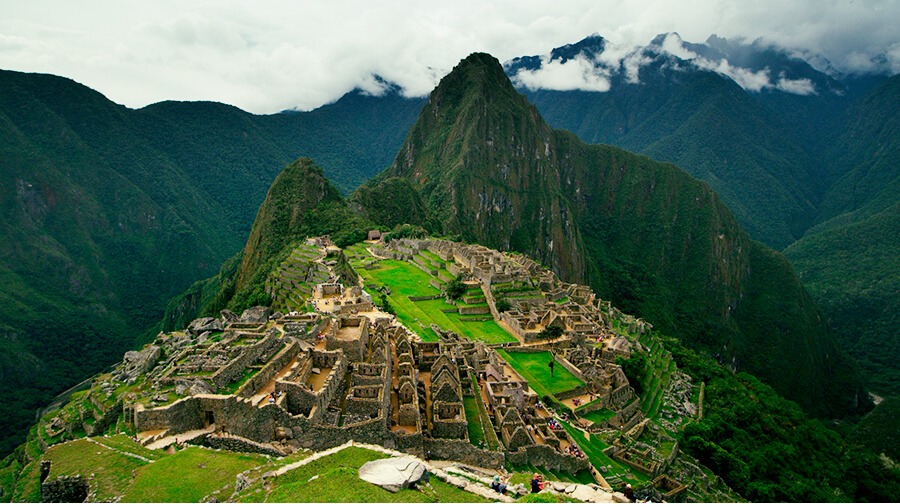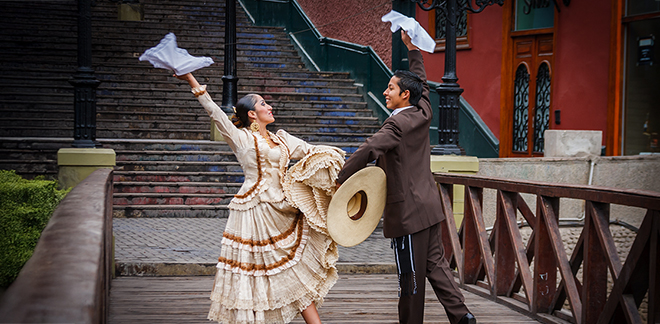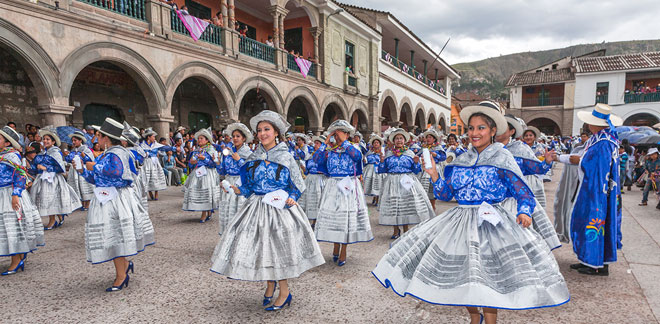Discover Peru's World Heritage destinations
Síguenos en:Google News
Do you know how many Peruvian places are World Heritage Sites? If so, when were they first recognized, in which regions are they located, and what was the last one to be added to the list?
These and other questions will be answered in this article as we tell you about Peruvian destinations that, thanks to their cultural heritage and biodiversity, constitute a universal value worthy of admiration.
A total of twelve sites are located in Peru and are currently on the World Heritage List of the United Nations Educational, Scientific and Cultural Organization (UNESCO). Eight of these sights are cultural, two are natural and two are mixed. They are found in the regions of Lima, Ica, Cusco, Áncash, Arequipa, La Libertad, San Martín and Madre de Dios.
Discover these places and come check them out. You won't regret it!
City of Cusco
Declared a Cultural World Heritage Site in 1983, it is located in the mountains and is considered the "archaeological capital of the Americas". It was the capital of the Tahuantinsuyo (the Inca Empire) and during the rule of the Inca Pachacutec Cusco consolidated its position as a complex urban center with religious and administrative functions. With the arrival of the Spanish, churches, convents and mansions were built, maintaining the base of the Inca constructions, and providing a mystical and magical mix. The neighborhood of San Blas is one of the most visited places thanks to its paintings, sculptures and handicrafts, which are representative of Cusco art.
Historic Sanctuary of Machu Picchu
The most recognized and well-known destination in our country was declared a Cultural and Natural World Heritage Site in 1983. Built on top of a mountain in the middle of a tropical forest, it is probably the most impressive architectural achievement of the Inca Empire. Machu Picchu is a citadel which has temples, terraces, walls, giant ramps, palaces, platforms and water channels, built with large blocks of stone and without any mortar, proof of the great wisdom of the Inca civilization. Due to its location on the eastern slope of the Andes, it has a variety of fauna and flora.
Chavín Archaeological Complex
Located in the province of Huari, Áncash was declared a UNESCO Cultural World Heritage Site in 1985. The complex gave its name to the Chavín culture that developed between 1500 B.C. and 300 A.D. and was considered a ceremonial center to which people would travel on pilgrimage from different regions. Noteworthy constructions include the Tello Pyramid, Plaza Circular, Plaza Rectangular, North and South-North Platforms, Tenon Heads, and the Lanzón monolith.
Huascarán National Park
It takes its name from the snow-capped Huascarán mountain which, at 22,205 feet above sea level, is the highest in Peru. This park is of great importance because it protects one of the areas with the greatest biological and cultural diversity in Peru. Within its limits there are around 660 glaciers, 300 lagoons of glacial origin and beautiful mountains, as well as varied flora and fauna. It is possible to do adventure sports, such as rock climbing and mountain biking, among other things. It is located in the Áncash region and was declared a Natural World Heritage Site in 1985.
Chan Archaeological Zone
It is the largest adobe city in the Americas and was declared a Cultural World Heritage Site in 1986. Located in Trujillo in the La Libertad region, Chan was the capital of the Chimú kingdom and it is estimated that it was home to approximately one hundred thousand people between 850 A.D. and 1470 A.D. It is made up of ten small walled citadels, pyramids, canals and cemeteries.
Manu National Park
Its location is shared between the departments of Madre de Dios and Cusco, between the provinces of Manu and Paucartambo, respectively. It is home to one of the most important areas of the planet in terms of the megadiversity of biological species. It is home to 4,300 varieties of plants, 1,000 species of birds, 350 species of mammals, amphibians and snakes, in addition to 1,300 species of butterflies, making it an excellent destination for nature tourism. It has been considered a Natural World Heritage Site since 1987.
Historic Centre of Lima
Known as the "City of Kings", it was recognized as a Cultural World Heritage Site in 1991. During Peru’s Viceroyalty period, Lima was the political and cultural center of South America. Some of its attractions are the churches, convents, balconies and mansions in baroque, renaissance or neoclassical styles. The Convent of San Francisco can be found in the historical center and has been a Cultural World Heritage Site since 1988.
Río Abiseo National Park
Created in 1983, it was recognized as a Cultural and Natural World Heritage Site only seven years later. It is located in the department of San Martín and its objective is the protection of the highly endemic fauna and flora of the rainforests that are characteristic of this region. It is home to the yellow-tailed woolly monkey, which was believed to be extinct and is found only in this area. It also has important archaeological sites belonging to the Chachapoyas culture, such as Gran Pajatén and Los Pinchudos.
Nazca Lines and the Pampas de Jumana
A few hours from Lima, the mysterious Nasca lines and Pampas de Jumana are located in Ica. Discovered in 1927, they are enormous geoglyphs that range from 164 to 984 feet long and can only be seen from the air. According to German archaeologist Maria Reiche, the Nasca lines were used as a solar and lunar calendar to predict better harvest stages. The enigmatic lines in the wide Nasca and Jumana pampas, which form geometric figures, animals, anthropomorphic beings and plants, among other things, were declared a Cultural World Heritage Site in 1994.
Arequipa Historical Center
Thanks to its colonial buildings, it was recognized in the year 2000 as a Cultural World Heritage Site. Known as the "White City" for its buildings made of sillar, white lava stone from the volcanoes surrounding the city. Its major attractions include the Santa Catalina Monastery, the Yanahuara Viewpoint, the La Compañía Church and Complex, and its Plaza de Armas.
The Sacred City of Caral
Caral is located in the middle of the Supe Valley, in the province of Barranca. It is the birthplace of the oldest civilization in the Americas (over 5 thousand years old). Built strategically on a terrace that protected it from possible natural disasters, this city developed along with cultures such as Mesopotamia, India, Egypt and China.
In 2009, the Sacred City of Caral was declared a Cultural World Heritage Site in Peru, due to its universal value and remarkable architecture, featuring six pyramids, buildings built with stones and wood from dead trees; and its enigmatic circular squares.
Qhapaq Ñan
This network of trails, which is more than 37,282 miles long and united the entire Tahuantinsuyo empire, was added to UNESCO's World Heritage List in 2014, classed as a cultural heritage itinerary. Also known as the "Great Inca Trail," Qhapaq Ñan connected various production, administrative, and ceremonial centers; it is undoubtedly an invaluable expression of how our ancestors organized and planned labor, which was vital to the development and unification of the empire. It currently covers Argentina, Bolivia, Chile, Colombia, Ecuador and Peru.
A total of 485 miles were declared a World Heritage, of which 155 miles of trails correspond to Peru. The largest network is located in Cusco, but there are also routes that pass by Lake Titicaca in Puno or the stretch between Vilcashuamán and Pisco. You can enjoy part of this trail near Lima, from the central highlands to the Pachacamac archaeological site.
DETAILS
- Taquile Island, located in Lake Titicaca (Puno), and its textile art, were declared Oral and Intangible Heritage of Humanity in 2005.
Sources: El Comercio/ g2peru.com/ Sernanp/ qhapaqnan.cultura.pe








